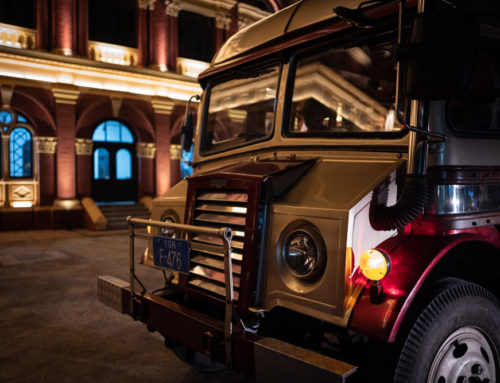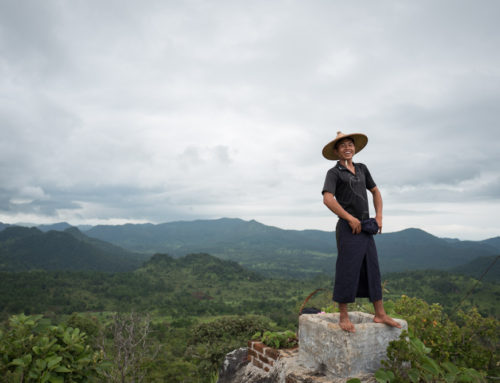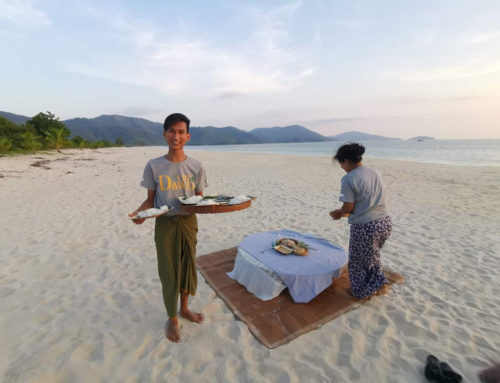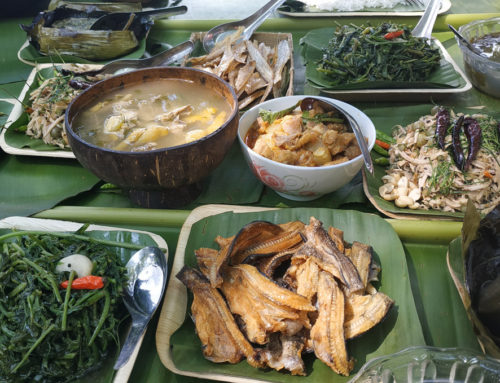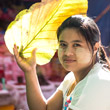TEN FACTS ABOUT BUDDHISM IN MYANMAR
Su Myat Naing, Tour Mandalay’s Product Executive provides us with ten fascinating facts about Buddhism in Myanmar. In no particular order of importance, here we go.
1) Almsgiving (food donation) to monks in the early morning
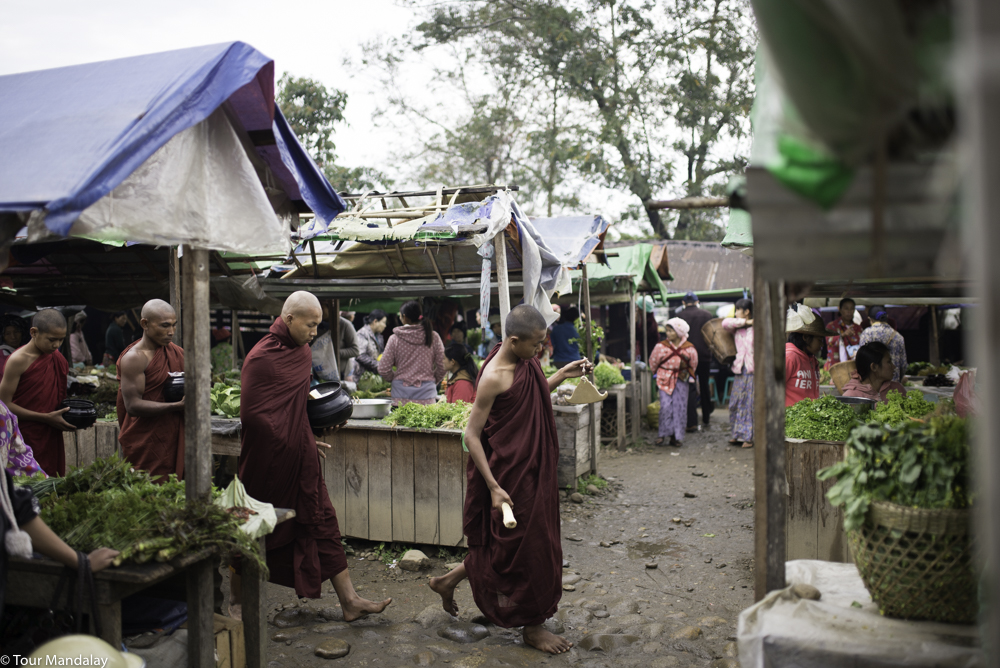
Almsgiving in Putao’s morning market
Almsgiving, or ‘Soon’ in Myanmar language, is practiced throughout the country every day of the year. The sight of this is surely one of the most charming and romantic associations with religion in Myanmar. In the early morning before sunrise, monks line up along the streets and walk slowly to receive food donations from local people. This is called an alms round. Local Buddhists practitioners spoon the rice into the alms bowl and offer a range of food, including curries and desserts to monks. They will then crouch down, with their hands placed together in a prayer like gesture, in order to receive a blessing from the monk. Due to the monks are walking barefoot, it is also important that the person giving the alms also removes their shoes.
2) Novitiation ceremony
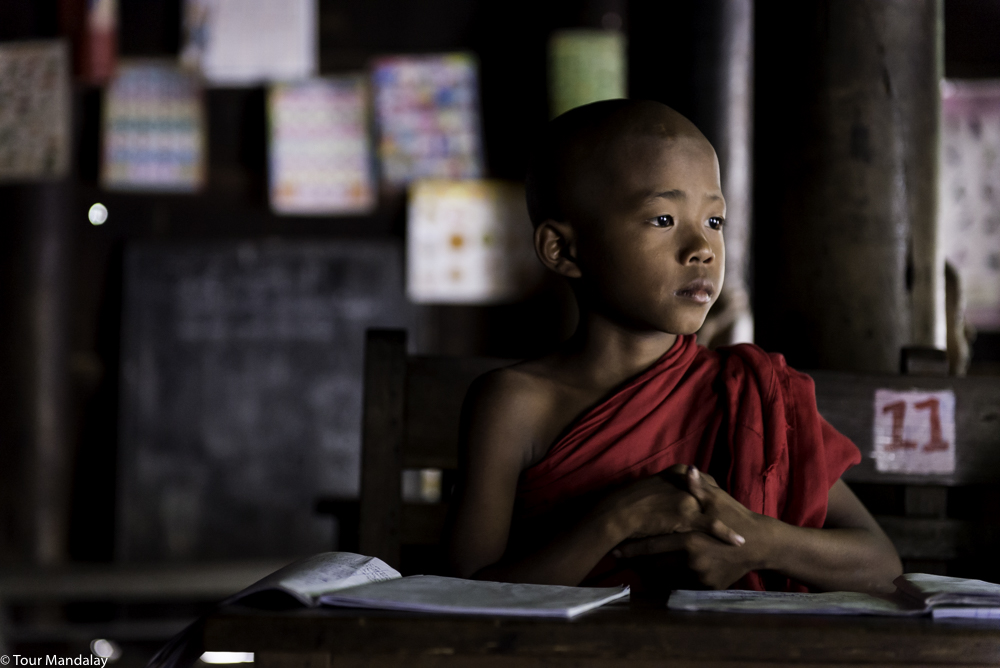
A novice monk studying at Bagaya Monastery, Ava
The Novitiation ceremony is another unique characteristic of Buddhism in Myanmar. The ceremony is usually celebrated during school holidays, but most often in the summer months of March and April (just before the Thingyan water festival). For pious Myanmar parents, it is deemed an important religious duty to let their son go forth and embrace the legacy of Lord Buddha. They will then join the Sangha for a short period of time to learn about important Buddhist teachings. Another requirement is that the son’s head is shaved, which is carried out as a sacrifice of vanity.
The first day of a Novitiation ceremony sees participants parade around their local pagoda dressed up as princes. Parents usually take lead from the front whilst carrying important ceremonial items such as an alms bowl, fan and a specially made box containing the robe. Other relatives walk by the novice monk’s side, shading them with a golden umbrella. It’s also common for the monk-to-be to be followed by a line female family members, who each carry decorative items in honour of the occasion. Upon completion of the procession, the family will then pay a quick visit to a Nat (sacred spirit) shrine for homage, before seeking permission from an abbot at a monastery to become a novice. It is also at this point when the individual shaves his head.
3) Religious courtesy in Myanmar
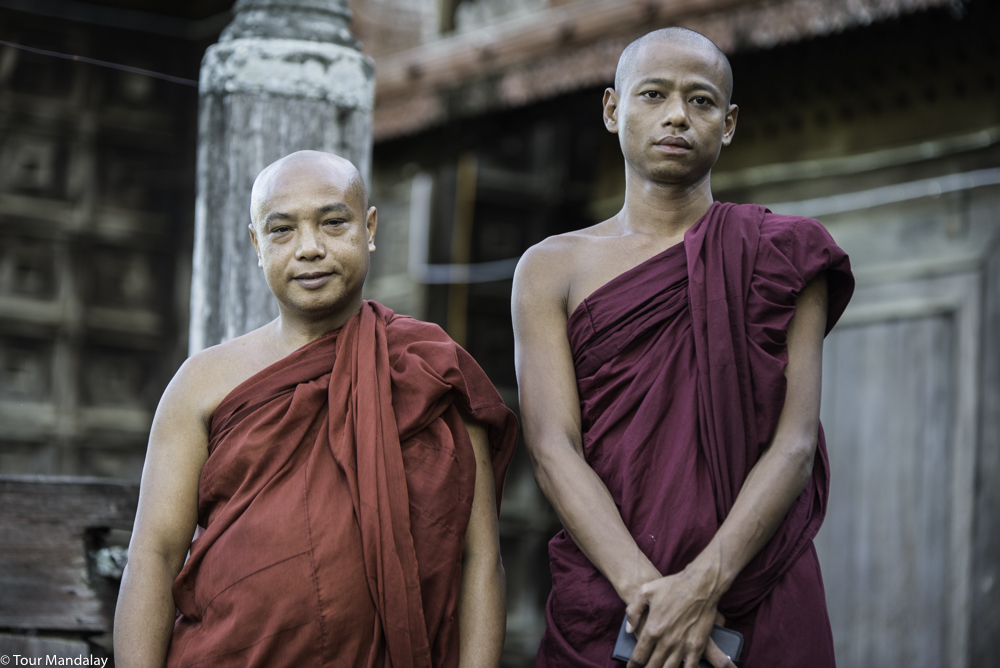
Enjoying conversation with monks in a monastery outside of Bagan
Images of Lord Buddha, along with practising monks and nuns are highly respected in Myanmar society. It is important that any visitor, regardless of personal belief, is respectful towards any aspect of life associated with Buddhism in Myanmar. Under no circumstance should you touch a monk or nun, along with his or her robes. When seated, you should not stretch out your legs and your feet should not point in the direction of any Buddhist imagery. Tattoos of Buddha, even if they were drawn out of respect, are likely to offend local people so please keep them covered up and do not display in public. Taking off shoes and socks at a religious site is a must, as is wearing appropriate clothing. Showing too much skin may see you turned away, so try to cover up as much as possible. Our advise would be to pack and wear a longyi (a sarong often worn by Myanmar locals); not only will this ensure your legs are covered, but it will be sure to put a big smile on the faces of local passersby.
4) Horoscopes and birthday corners
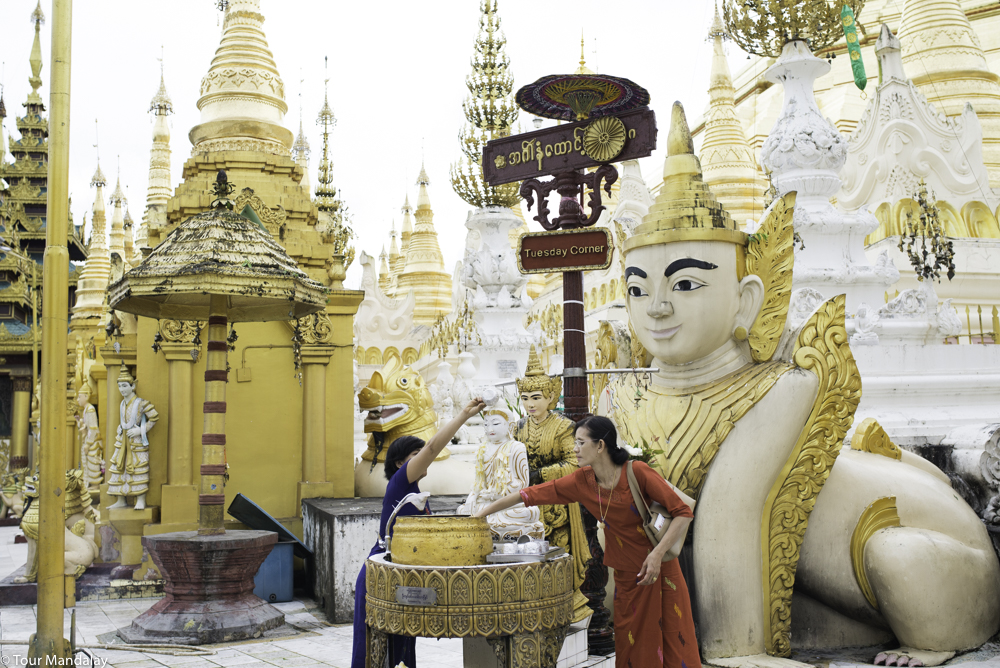
Paying respect to the Tuesday birthday corner at Shwedagon Pagoda
The majority of Myanmar’s Buddhist practitioners believe fervently in astrology. Due to the Myanmar horoscope practise being based on the day of the week, an individual’s date of birth is extremely important. There are eight zodiac signs in Myanmar, one for each day of the week (including two on a Wednesday). These signs are represented by animals with Monday being a tiger, Tuesday a lion, Wednesday morning an elephant, Wednesday afternoon a tusk-less elephant, Thursday a rat, Friday a guinea pig, Saturday a dragon and Sunday a Garuda (a mythical bird). When a child is born, it is common for them to be named using a name associated with their zodiac sign. Many people also believe that the day of birth determines an individual’s personality. Almost every pagoda (depending on size) has a special corner dedicated to each sign of the zodiac and this is often referred to as the birthday corner. People often visit pagodas to pay respects to their corner and carry out special devotional acts. Neglecting to do this may bring about bad luck and misfortune.
5) Watering the scared Banyan (Bodhi) Tree
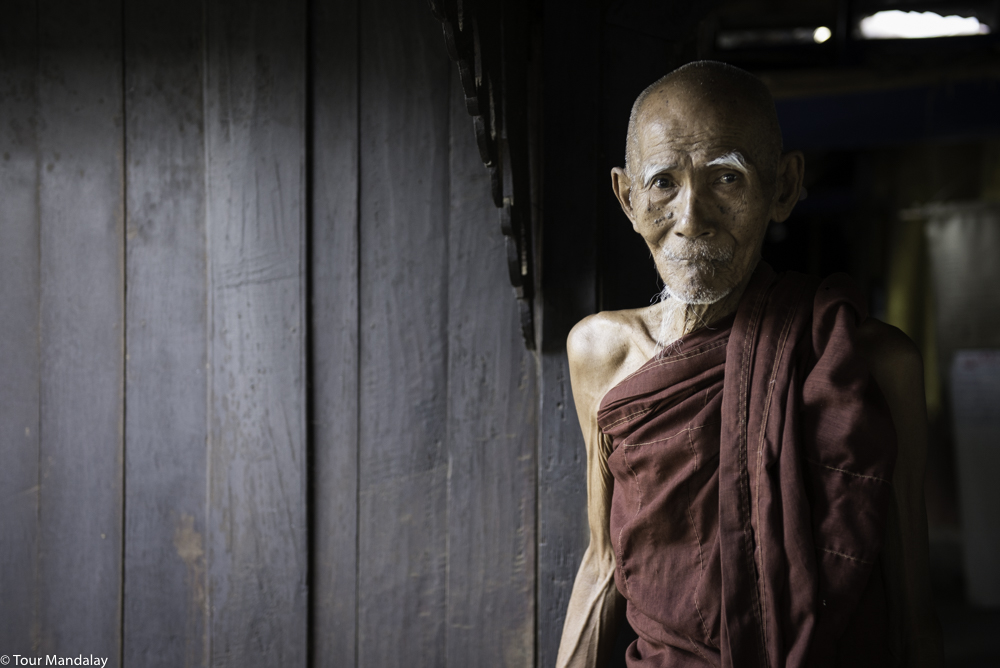
A head monk in the monastery at Yandabo village
The Banyan, or Bodhi Tree, plays an extremely important role in the spiritual life of Myanmar Buddhists. The main reason being that it is the tree associated with the life of Lord Buddha. It is said that Buddha attained enlightenment under a banyan tree and as such, it is revered by Buddhists all over the world to this day. When travelling you will notice that almost every major pagoda complex has a Bodhi tree located somewhere inside and it is common to see people paying their respects.
On the full moon day of Kason, Buddhist devotees honous the occasion by pouring water on the Bodhi tree. For Myanmar Buddhists this day is very important as it’s the day Buddha was born, the day he attained enlightenment and the day of his demise. The carrying out of the ceremonial act is supportive not only to the religion and traditions, but also in keeping the sacred trees green, lush and healthy during the summer months. In addition, people perform meritorious deeds by keeping Sabbath, chanting Buddha’s Summons, meditating, and by offering various items such as flowers, water and incense to images of Lord Buddha.
6) Festivals
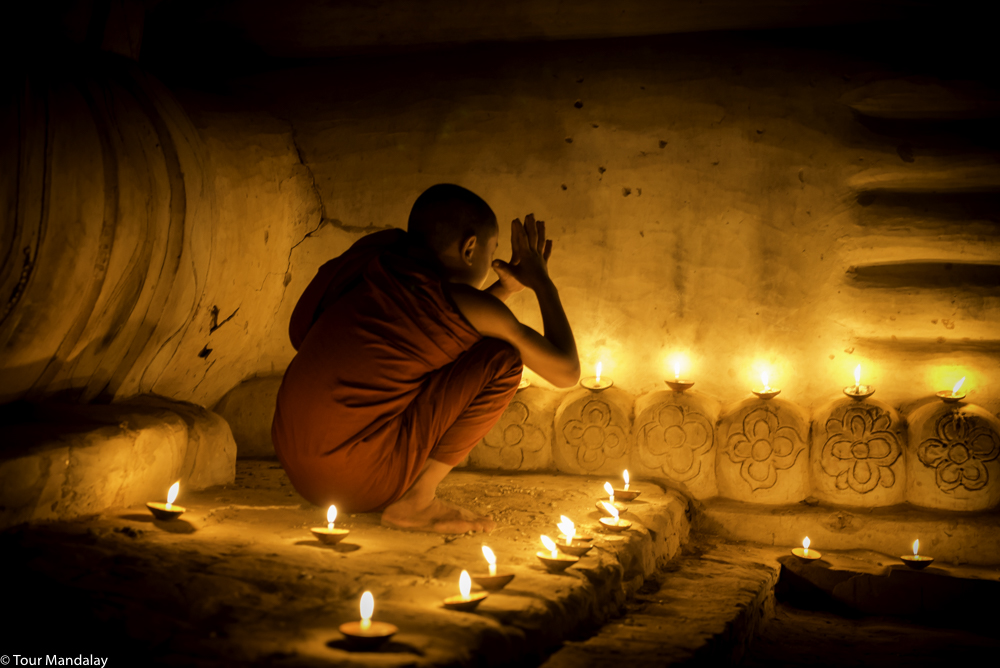
A novice monk paying respect to a reclining image of Lord Buddha
Myanmar is a country rich with culture and religious festivals. When we talk about Buddhism in Myanmar, we cannot forget to mention the many festivals that take place throughout the year. For me, one of the most special is the Thidingyut (Light) festival celebrated across the country from the beginning of October. The story behind the festival is that Lord Buddha came down from the abode of Tavatimsa (according to Buddhist cosmology, the second highest level of 31 planes of existences) after spending three months of the Buddhist lent there. People welcomed Lord Buddha with candles and colourfully illuminated objects of light. During the festival, houses and streets are decorated with lanterns and strings of light. People typically enjoy this lighting festival by visiting pagodas at night with friends and family. Here it’s common to see wonderful displays of oil lamps, fireworks and manmade balloons rising slowly up into the sky.
7) Paying homage in Myanmar
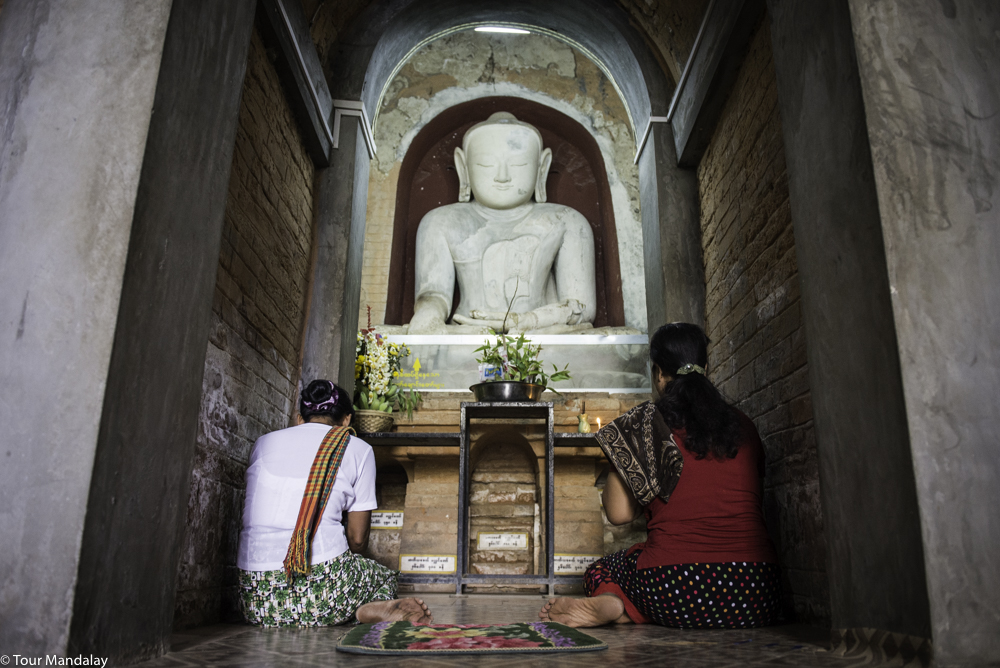
Paying respect at Ta Moke Shwe Gu Gyi
Paying homage is a long-standing practise of devout Myanmar people. A person, always of lower social standing, pays respect or homage to a person of higher standing (including images Lord Buddha, Buddhist monks, elders, parents and so on), by kneeling before them and paying obeisance with joined hands and bowing. This is a way of showing an individual’s reverence, gratitude and it also serves as an opportunity to ask for forgiveness. Elders readily forgive if there is anything to forgive. This form of repentance is usually carried out over the Thingyan and Thadingyut periods.
8) Mythical lions
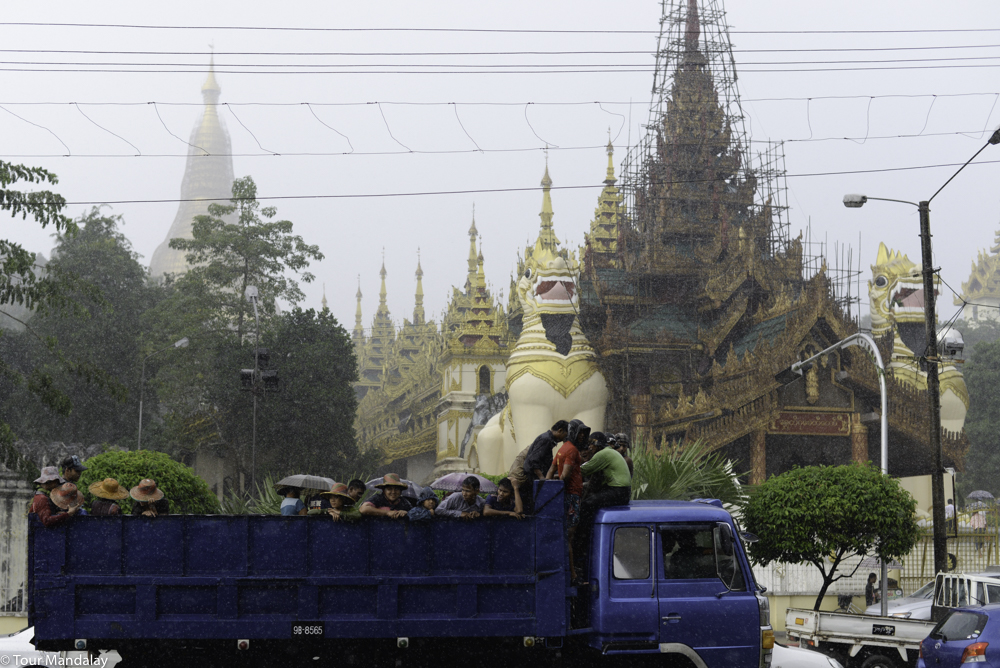
Come rain or come shine, two lions keep watch over the entrance of Shwedagon Pagoda
In Myanmar a pair of mythical lions, known as Chin-the, can often be found outside the entrance of stupas, pagodas and Buddhist temples. Lions are noted for their bravery and magnificence, thus considered the best guardians for religious shrines and edifices. According to folklore, the lions actually stand watch for completely different reasons.
A princess gave birth to a son through her marriage to a lion, but later fell out of love with him. Pained with a broken heart, the lion was unable to control his feelings and unintenionallt became the terror of the land. One day, the son went out to slay the lion, only to find out after that it was his father. To atone for his sins, the son later built a statue of a guardian lion outside of a temple.
9) The donation of gold leaf
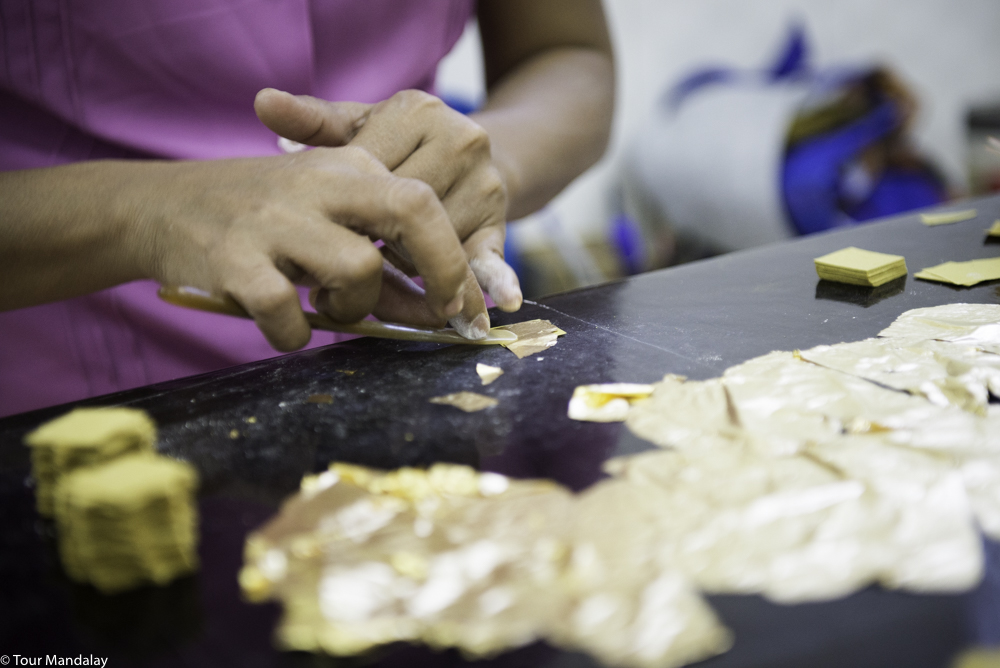
Gold leaf production in Mandalay
Segments of delicate gold leaf are widely sold at the pagodas in Myanmar. Devotees gently press the gold leaves onto sacred images as offerings; for most, this is seen as a meritorious deed. Some believe that by placing a gold leaf on a certain parts of a Buddha image, it will help to cure their own pain in that area. The majority of gold-leaves are made in Mandalay.
10) Robe offering
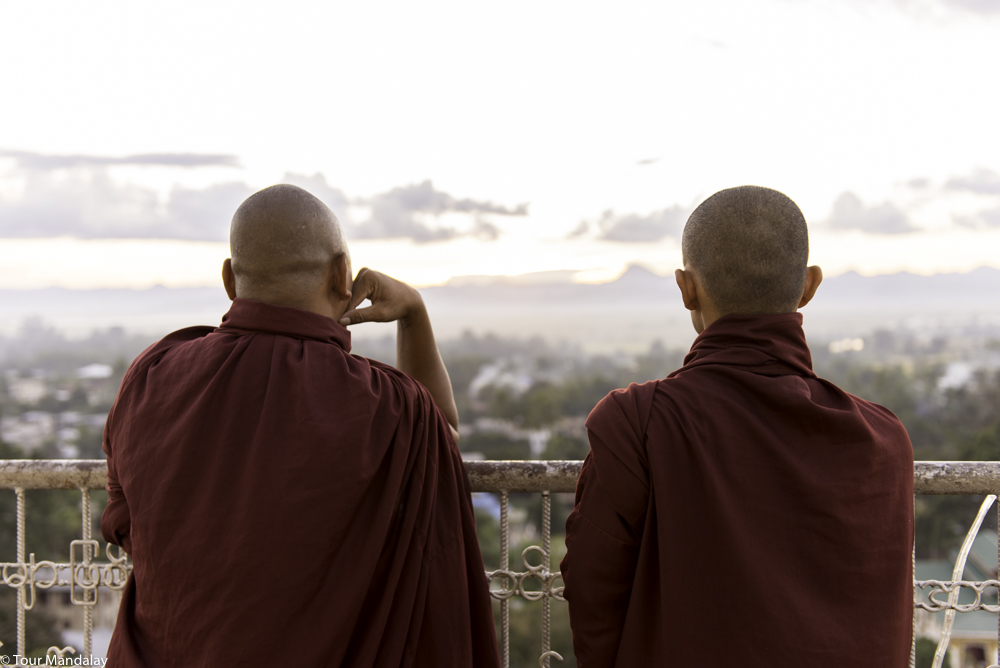
Two monks watch the sun slowly setting over Loikaw
Myanmar people believe that offering robes to monks and Lord Buddha is one the noblest forms of donation. Buddhists in Myanmar offer robes on various occasions. The most famous of all are the Waso robe offering, Kahtein robe offering and Matho-thingan offering.
The Waso robe offering is celebrated in the Myanmar month of Waso. It marks the beginning of the three-month period of lent in the month of Waso (June – July). This ceremony celebrates Lord Buddha’s first sermon, delivered forty-nine days after he attained nirvana. During the ceremony monks are offered robes to wear during lent, a time when they are not allowed to travel. According to the monks’ code of conduct, they are still obligated to carry out a round of alms to source the monastery’s daily provisions. Monsoon season also starts around about the time of Waso, so the offering also helps to ensure the monks have an extra supply of dry robes (anyone that’s visited Myanmar before will know how heavy the rain can get!). Interestingly, events such as marriage and moving home are avoided during the lent period and pious individuals try to follow the five precepts more conscientiously.
The Kahtein robe offering ceremony takes place between the full moon day of Thadingyut and the full moon day of Tazaungmone (October – November). This robe cannot be offering to a monk of an individual’s choosing, but to the Sangha in general. People also donate other useful accessories such as umbrellas, shoes, fans, medicines and alms bowls. These donations are then hung from tree-like stands (usually found in public places all over the country) and sent to monasteries in a delightful, pomp and lively procession.
The Matho-thingan, literally translates as “the robe that has not decayed”. Groups of devout Buddhist women start weaving robes in contest on the 14th waxing day of Tazaungmon (usually November) with the aim of completing the garment by sunrise. Shortly after, the robe is then donated to a sacred Buddhist image.

